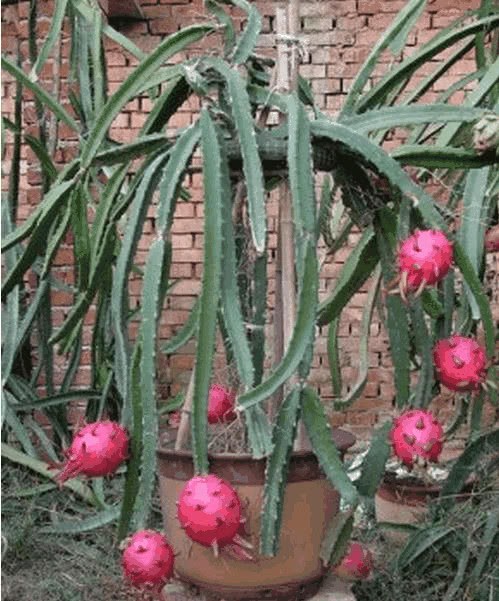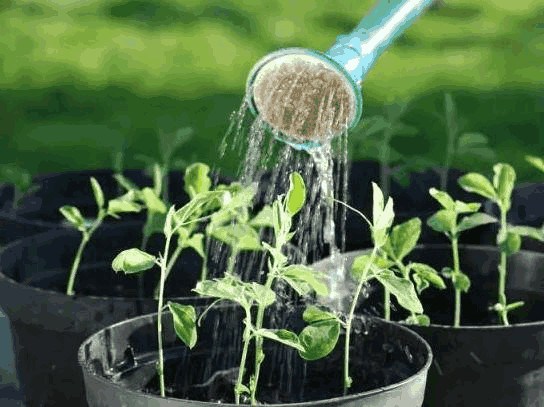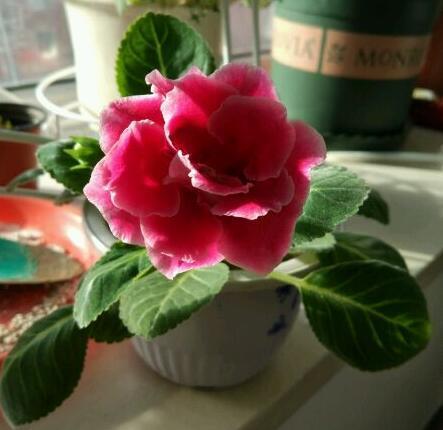How do you grow dragon fruit at home? Teach you the practical method of potted family dragon fruit cultivation.

When we eat dragon fruit, we go to the supermarket to buy it. I didn't expect that we can grow dragon fruit at home. As long as you have a pot for planting flowers and vegetables and fill in the soil, we can pot dragon fruit. Maybe you don't have to go to the supermarket to buy it again.
How does the family plant dragon fruit?
1. The choice of basin
Pitaya is a shallow-rooted plant. Prepare a mud basin with a drainage hole at the bottom. If there is no mud basin to find a wooden box, as long as it is good air permeability, it is best not to use plastic, too airtight containers. Before planting pitaya, soak the pot with clear water for several hours to discharge the dirty gas from the stomata on the basin wall, otherwise it will affect the root growth of the plant.
2. Selection of soil quality.
Planting dragon fruit should first find some neutral or slightly acidic soil, which must be loose and breathable, and alkaline soil is not conducive to cultivation. We can also make our own culture soil, which can be mixed with rotten leaf soil, manure soil and coarse river sand at 6:1:1.
3. Pot planting method
Cuttings are the easiest way to survive potted pitaya. As long as the seedlings grow roots and send out new branches, the pots can be moved. A water outlet should be made at the bottom of the basin, and a tile can be used around the hole to prevent sand from leaking out, or a layer of large pebbles can be laid first. Then pour into the soil, put the two seedlings on the mound, and the roots are scattered in the soil. Then gently press the soil on the edge of the basin with your hands, pour water through it, and move it to the balcony after a week.
4. Cultivation and management
The dragon fruit is very resistant to drought, so the water does not need to be irrigated too frequently, but to keep the soil moist, the organic fertilizer solution based on nitrogen fertilizer can be diluted once a week. The lateral buds on the stem branches should be removed and the item buds should be retained so that they can grow taller. When the plant is about 1 meter tall, cut off the stem tip about 3 centimeters long at the top, so that lateral branches can be sent out at the top so that they will not grow any more. When the apical lateral branch grows to about 50 cm. And then on the edge of the basin with a high bamboo pole, tie the crossbeam at the top of the bamboo pole, and tie the side branches to the crossbeam to make it flat or droop naturally. When the lateral branch is more than 80 cm, the stem tip should be cut off about 3 cm to reduce nutrition consumption, promote flower bud differentiation, and blossom and bear fruit earlier. If well managed, it will blossom in 7-8 months.
5. Management of florescence
The flowering period of dragon fruit is long, because many flowers are large, so the demand for nutrition is also high. In addition to the need to add fertilizer and water, organic liquid fertilizer containing phosphorus and potassium should be applied every 5-7 days half a month before flowering. If potted dragon fruit is planted on the balcony or roof, because the amount of soil in the pot is small and the nutrition supply is limited, so the side branches should not stay too long, and only 1 fruit is recommended for each branch. Pitaya can be self-pollinated and fruited, and can be pollinated artificially under certain conditions. In the evening, when the flower is in full bloom, use a new brush to dip pollen from the stamen anther of one flower and bounce it on the pistil stigma of another flower.
- Prev

Don't pour out these five kinds of water at home to water the flowers and don't even need fertilizer.
Growing flowers on the balcony, if you want the flowers to grow well and strong, you still have to apply fertilizer. Generally, we will buy them, such as compound fertilizer, phosphorus and potash fertilizer and so on. In fact, in life, a lot of water that we think is useless to pour out can also be used to water flowers and grow vegetables.
- Next

This flower is really beautiful. A leaf and a pot of flowers bloom continuously for more than half a year. The balcony is full of them.
Big paulownia flowers bright colors, there are red, pink, fuchsia, blue and so on, petals have single petals and double petals, the flower shape is special, the flower is really good-looking, although its height is only more than ten centimeters, but the flowering period is very long.
Related
- Wuhan Hospital Iron Tree Blooming Result Was Instantly Frightened by the Gardener Master
- Which variety of camellia is the most fragrant and best? Which one do you like best?
- What is the small blue coat, the breeding methods and matters needing attention of the succulent plant
- Dormancy time and maintenance management of succulent plants during dormancy
- Minas succulent how to raise, Minas succulent plant pictures
- What are the varieties of winter succulent plants
- How to raise succulent plants in twelve rolls? let's take a look at some experience of breeding twelve rolls.
- Attention should be paid to water control for succulent plants during dormant period (winter and summer)
- Watering experience of twelve rolls of succulent plants
- Techniques for fertilizing succulent plants. An article will let you know how to fertilize succulent plants.

